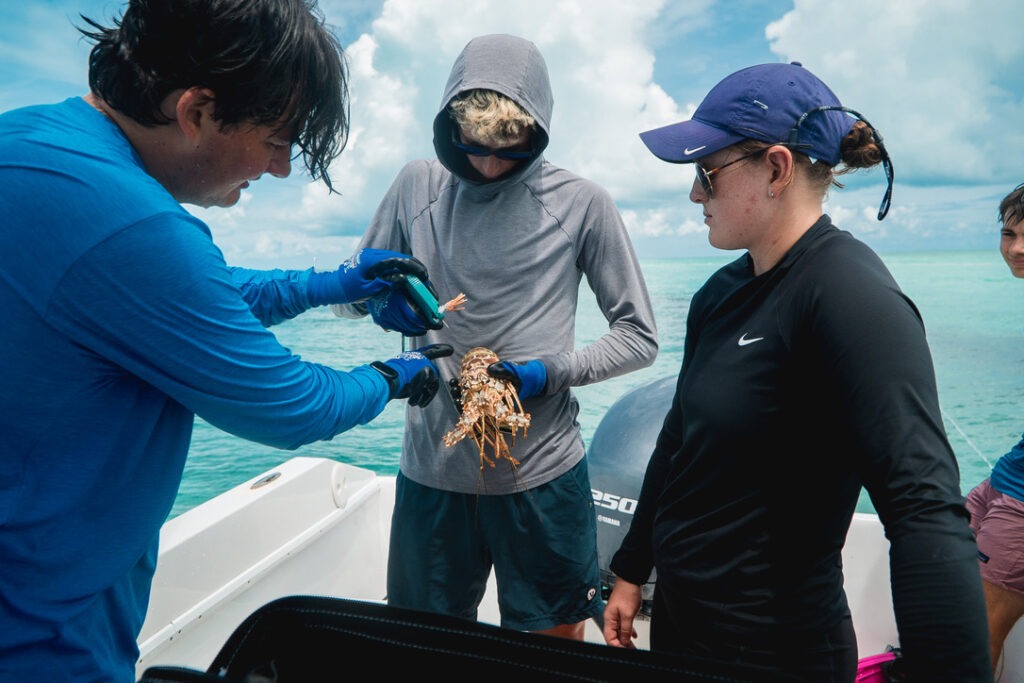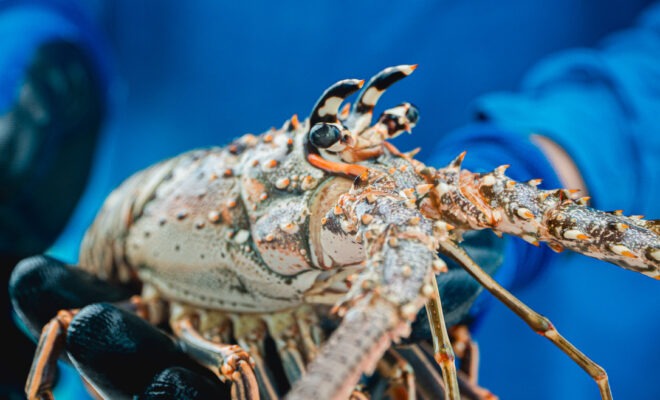Imagine a world where protecting marine life also leads to better catches for fishermen. That’s the goal of a new research project at the Cape Eleuthera Institute (CEI), where scientists are trying to understand how Marine Protected Areas (MPAs) can help improve lobster populations and support sustainable fisheries.
The star of the study is the Caribbean spiny lobster (Panulirus argus) or crawfish, a species vital to the economy of The Bahamas.
Many fishermen rely on these lobsters to feed their families and earn a living. The fishery is currently believed to be healthy and certified as sustainable, but any fish stock decline, particularly in coastal waters, will be felt by these communities first. Protected areas, like the Exuma Land and Sea Park, offer a solution by restricting fishing in specific areas to allow marine life to replenish. The hope is that lobsters will “spill over” from these protected areas into nearby fishing grounds, boosting local catches.

Determining the effectiveness of marine protected areas
But how do we know if this spillover effect is happening? This project aims to answer that question by tagging lobsters and tracking their movements through a mark-recapture experiment. This project is led by Marco Turner, a Bahamian scientist that has recently completed his Masters degree studying another type of lobster—the American lobster (Homarus americanus). Marco is working with Dr. Nick Higgs, the Director of Research and Innovation at the Cape Eleuthera Institute, and Dr. Trevor Avery from Acadia University to tag and recapture lobster around Eleuthera. The process involves using specialized lobster ‘condos,’ also called ‘traps’ by fishermen, which help gather lobsters in specific locations for tagging.
Divers will catch lobsters, record key data like sex, size, and condition; and then release the lobsters back into the water. By revisiting these sites in the months to come, the team hopes to recapture some of the tagged lobsters to analyze their movements. This information will shed light on how lobsters move around the seabed in South Eleuthera and quantify the benefits from spillover effects from new protected areas.

How The Community Can Get Involved
This project isn’t just about scientific research; it’s also about getting the local community involved in a meaningful way. If you happen to catch a tagged lobster while fishing, you can play a critical role in the success of the study. Simply note the tag number, the location where the lobster was caught, and, if possible, the size and condition of the lobster. This information can then be shared with the research team, helping to map out the lobsters’ movements across the region. You can report a tag by emailing research@islandschool.org.

By reporting your findings, you’re directly contributing to conservation efforts and supporting sustainable fisheries. This involvement ensures that local knowledge and hands-on experience are integrated into the project, making it a collaborative effort between researchers and the community. Not only will your participation help preserve the lobster population, but it could also increase future catches, benefiting everyone who relies on the fishery.
By combining local knowledge and cutting-edge research, this project aims to demonstrate how protected areas can play a critical role in maintaining healthy marine ecosystems while supporting sustainable fisheries. The results could guide future conservation efforts, not just in The Bahamas, but across the Caribbean, where similar challenges exist.
With the success of this study, the team hopes to expand their efforts and continue monitoring lobster populations for years to come. Ultimately, this work will help ensure that the spiny lobster fishery—a lifeline for so many Bahamians—remains viable for future generations.
